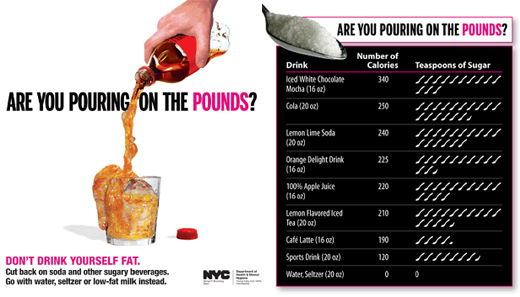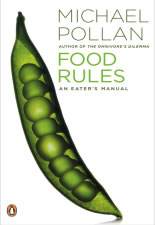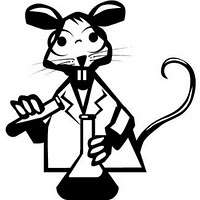
 This post isna??t being written to frighten you or to cause you to mistrust hospitals.
This post isna??t being written to frighten you or to cause you to mistrust hospitals.
Ita??s to make you aware that medical errors do occur, but there are steps that you can take to help prevent medical errors from happening.
First, some vital information
According to a recent investigation by the Hearst Corporation, a staggering 200,000 Americans will die each year from preventable medical errors and hospital infections.?? This report comes ten years after the highly-publicized report, a??To Err Is Humana?? which found 98,000 Americans were dying each year of medical errors.?? Instead of the number of medical errors decreasing, it nearly doubled.
Despite this recent report, little has been done to prevent further medical errors from happening.
Its authors and patient safety advocates believed that its release would spur a revolution in patient safety.?? But Hearsta??s a??Dead By Mistakea?? reveals that the federal government and most states have made little or no progress in improving patient safety through accountability mechanisms or other measures.?? According to the Hearst investigation, special interests worked to ensure that the key recommendations in the reporta??most notably a mandatory national reporting system for medical errorsa??were never implemented.
A Mothera??s Voice
In this video from USA Today, Sorrel King talks about the death of her daughter who says she died because there was a breakdown in communication.
King says,
a??There was a total complete breakdown in communication, breakdown in communication between me and the nurses, me and the doctors, between the team and the nurses, it was just a huge breakdown.a??
My Top 6 Tips to Help Prevent Medical Mistakes
1.?? Communicate
Communication between patients and health care professionals is critical for positive patient outcomes. Communication is imperative for patient safety and good quality patient care.
In a hospital, which is a very fast-paced environment, where seconds can mean the difference between life and death, ita??s crucial that communication flows consistently and thoroughly between patients, their families and staff. Speaking up and communicating needs to be continuous.?? Communicate in a non-threatening manner.
The Joint Commission, (JCAHO), launched a national campaign in 2002 to urge patients to become active in their health care to help prevent errors. Speak Upa?¢ encourages patients to:
Speak up if you have questions or concerns, and if you dona??t understand, ask againa?|
Any breakdown in communication can result in a breakdown of quality patient care, and the results can be devastating.?? If you dona??t understand something, ask for clarification.?? If you need assistance, ask!
If you find that communication between you and your doctor or nurse is not flowing, and your questions are not being answered, or if you do not feel your needs are met, you ask to speak to the nurse manager. (On evenings, nights, weekends and holidays, it may be the administrative head nurse, assistant director of nursing or nursing supervisor who will help you address any issues.)
2.?? Be Prepared a?? Carry your personal medical history & medication form with you
During your admission assessment, whether you were brought to the ER or directly admitted to the hospital, you will be asked multiple times by multiple staff for a list of your medications, past hospitalizations, if you have any allergies and emergency contact numbers.
If you have any allergies, make sure they are recorded on your chart.
Carry this personal medical history and medication form in your wallet at all times; in case of an emergency or for a scheduled hospital visit; youa??ll be prepared.
(As an expert medical contributor to Real Simple Magazine, a??In an Emergency,a?? this was my number one tip).
3.?? Going for surgery?
If you are scheduled for surgery:
- Make sure you understand EXACTLY whata??s involved.
- Make sure you go over with the surgeon the area of your body that is involved.
- Make sure the appropriate area is clearly marked by the surgeon.
- Make sure the correct area is visibly marked.
4.?? Know your medications
Understand the medications that are ordered for you in the hospital.?? When the nurse administers your medication, make sure you understand what it is for and its potential side effects. Also, make sure your nurse identifies you as the correct patient before any medications are administered.
Before administering any medications the nurse should perform five checks:?? Right Patient, Right Drug, Right Dose, Right Route, and Right Time.
If you believe you are about to receive the wrong medication let your nurse know immediately.
5.?? Be your own advocate or bring a trusted family member with you
Ask a trusted family member or friend to be your patient advocate. The hospital environment can be very frightening and overwhelming and often answering simple questions can be difficult.
If you have an advocate with you they can speak up on your behalf and answer questions for you.?? Make sure your advocate understands your plan of care and whether there is an advance directive. An advance directive will allow a designated person to make medical decisions for you in case you are unable to.
To print out an advance directive form, go to the American Academy of Family Physicians.
6.?? Ask hospital staff if they washed their hands
Hand washing is the single most effective way to stop the spread of infections.
Dona??t assume that your doctor, nurse or anyone else that comes in contact with you just washed their hands. Ita??s okay to ask them if theya??ve just washed their hands.
Make sure your visitors wash their hands.?? Washing your hands for 30 seconds with warm soapy water will do the trick.?? If a sink isna??t nearby, alcohol based hand sanitizers work great.?? In fact, some hospitals even make hand dispensers available not only by each patienta??s room door, but inside each room.
While the Hearst report reveals shocking statistics, you can do your part to help prevent medical errors.



 When should small kids get online? Is there a magic age? Is there a a??besta?? way to start? What websites should small kids begin their online life with? And, most importantly, is it safe for small kids to be online?
When should small kids get online? Is there a magic age? Is there a a??besta?? way to start? What websites should small kids begin their online life with? And, most importantly, is it safe for small kids to be online?



 Can you sweat out toxins?
Can you sweat out toxins?

 Raise your hand if you want to eat healthy.
Raise your hand if you want to eat healthy. Your
Your 
 Michael Pollan has become one of our most important writers about human nutrition. His book, The Omnivore’s Dilemma (2006), spelled out why the almost??eight bil
Michael Pollan has become one of our most important writers about human nutrition. His book, The Omnivore’s Dilemma (2006), spelled out why the almost??eight bil

 A patient came into the office the other day carrying a small clipping from a reputable women’s health newsletter touting new research on an herbal remedy for urinary tract infection. Having recurrent bladder infections, my patient naturally was wondering if this was something she should try.
A patient came into the office the other day carrying a small clipping from a reputable women’s health newsletter touting new research on an herbal remedy for urinary tract infection. Having recurrent bladder infections, my patient naturally was wondering if this was something she should try.

 With back-to-school time around the corner, the Centers for Disease Control and Prevention has issued a warning about the risk for heat-related illness in young athletes, especially football players, the Los Angeles Times reports.
With back-to-school time around the corner, the Centers for Disease Control and Prevention has issued a warning about the risk for heat-related illness in young athletes, especially football players, the Los Angeles Times reports.